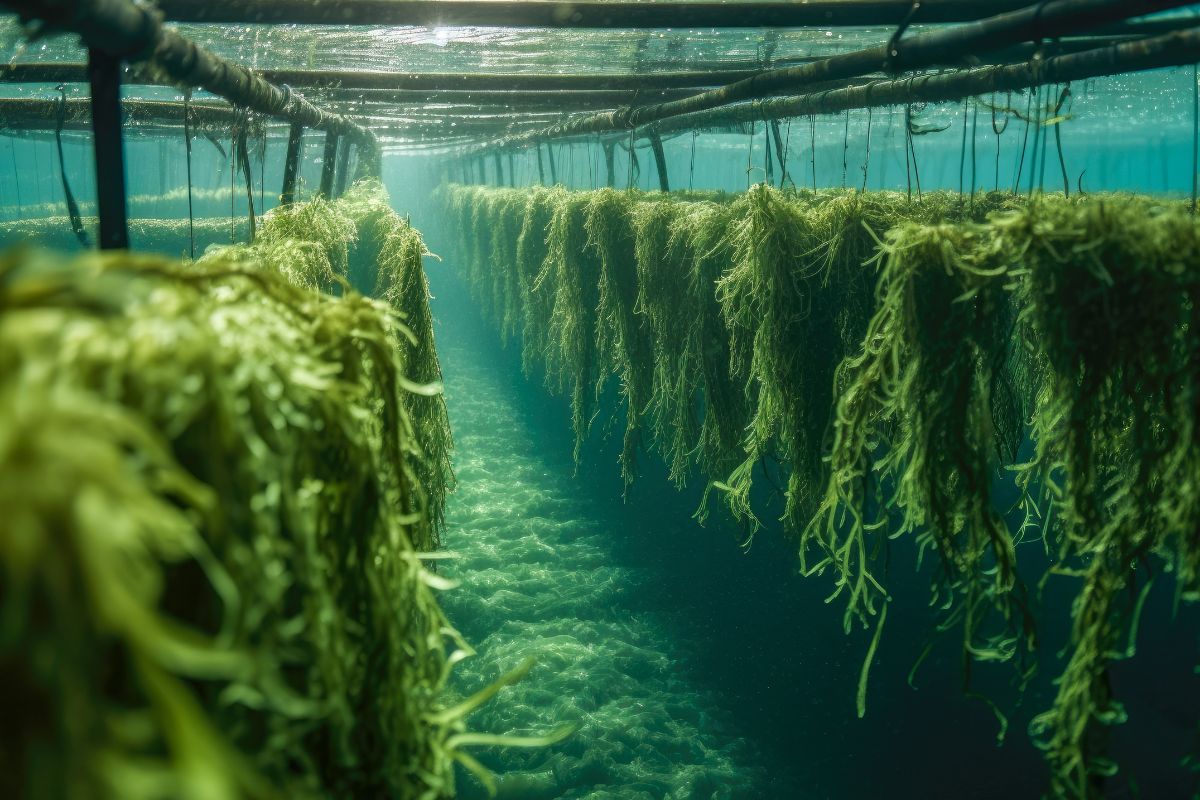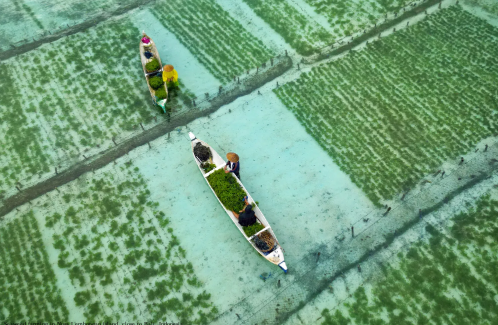|

Photo: Stockfile/FIS
Seaweed: A Sustainable and Versatile Resource for Aquaculture
 WORLDWIDE WORLDWIDE
Wednesday, November 06, 2024, 00:10 (GMT + 9)
Seaweed, often hailed as "the crop of the sea," is increasingly recognized as a sustainable and highly versatile asset with considerable potential in aquaculture, according to reports from the Indian news outlet AgriTimes.
This marine plant brings a host of environmental benefits and diverse commercial applications. As global priorities shift towards sustainable practices and alternative food sources, seaweed emerges as a compelling solution for the future of aquaculture.

Photo: americanoceans.org
Environmental Advantages of Seaweed Farming
Seaweed cultivation presents numerous environmental benefits, making it an optimal choice for sustainable aquaculture:
- Carbon Sequestration: Seaweed absorbs carbon dioxide (CO2) through photosynthesis, aiding in climate change mitigation. Certain species can sequester up to 20 times more carbon per acre than terrestrial forests.
- Nutrient Absorption: Seaweed absorbs excess nutrients such as nitrogen and phosphorus, curbing eutrophication and improving water quality. This process helps counteract nutrient pollution from agricultural runoff and other sources.
- Habitat Creation: Seaweed farms create natural habitats that support marine biodiversity, offering shelter and food to fish, invertebrates, and other organisms, thus bolstering ecosystem health.
- Minimal Resource Demand: Unlike traditional crops, seaweed farming requires no freshwater or synthetic fertilizers, alleviating pressure on freshwater resources and preventing the ecological impact of chemical use.

Photo: Blue Economy Cooperative Research Centre (CRC)
Wide-Ranging Applications of Seaweed
Seaweed’s adaptability makes it valuable across multiple industries:
- Food and Nutrition: Seaweed is nutrient-rich, packed with vitamins, minerals, and antioxidants. Already a staple in Asian cuisine, it is gaining global traction as a superfood and can be consumed fresh, dried, or processed into snacks, seasonings, and supplements.
- Example: Nori, a type of red seaweed, is well-known as a sushi wrap and is also used as a dried seasoning.
- Animal Feed: Seaweed enriches animal feed, boosting growth and immunity in livestock and aquaculture. Certain seaweed species can even reduce methane emissions in ruminants, fostering sustainable farming.
- Example: Adding red seaweed (Asparagopsis) to cattle feed has shown to reduce methane emissions by up to 80%.
- Bioplastics and Packaging: Seaweed-derived bioplastics offer biodegradable, eco-friendly alternatives to conventional plastics, particularly useful for food packaging due to their natural barrier properties.
- Example: Companies like Evoware and Loliware produce edible and compostable seaweed-based packaging.
- Pharmaceuticals and Cosmetics: Seaweed contains bioactive compounds valued for their antioxidant, anti-inflammatory, and antimicrobial properties. It is a common ingredient in skincare, promoting hydration and anti-aging.
- Example: Alginate, extracted from brown seaweed, is used in wound dressings for its moisture-retentive properties and is popular in anti-aging products.
- Biofuels: Seaweed biomass can be transformed into renewable energy sources like bioethanol and biogas, reducing reliance on fossil fuels and contributing to lower greenhouse gas emissions.
- Example: Pilot projects are advancing the conversion of seaweed to bioethanol and biogas, demonstrating scalability potential.

Photo: foodunfolded
Case Studies and Success Stories
Several innovative projects exemplify seaweed's potential:
- Ocean Rainforest (Faroe Islands): One of the largest seaweed farms in the North Atlantic, focusing on minimizing environmental impact while producing seaweed for food, feed, and bioproducts.
- Maine Seaweed (USA): A cooperative promoting sustainable harvesting and cultivation of native seaweed species, supplying products to local and global markets.
- GreenWave (USA): A non-profit advocating for regenerative ocean farming with a 3D model that integrates seaweed and shellfish, enhancing biodiversity and resilience.

Photo: foodunfolded
Challenges and Future Prospects
Despite its promise, seaweed farming faces challenges:
- Regulatory Frameworks: Clear and supportive regulations are necessary to facilitate industry growth, including streamlined permitting and sustainable practice guidelines.
- Market Development: Consumer education is essential to build awareness and demand for seaweed products, highlighting their nutritional and environmental benefits.
- Research and Innovation: Ongoing research is needed to refine farming techniques, improve yields, and explore new applications. Collaboration between academia, industry, and government will drive these advancements.
- Investment and Funding: Securing financial support is crucial for scaling up operations. Public and private investment can accelerate the adoption of seaweed as a key aquaculture crop.
.png)
Photo: foodunfolded
Conclusion
Seaweed stands as a sustainable and versatile crop with transformative potential for aquaculture. Its environmental benefits, myriad applications, and expanding market position it as a cornerstone for future sustainable food production and resource management. By overcoming challenges and embracing innovation, the seaweed industry can flourish, supporting global food security, environmental protection, and economic growth. As the world pursues a sustainable future, seaweed exemplifies how natural ingenuity can be harnessed for broad-scale benefits.
editorial@seafood.media
www.seafood.media
|
|



